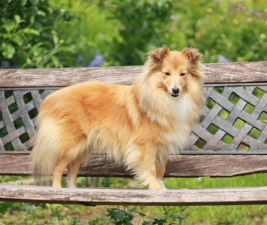After being “in dogs” for more than 20 years, you get to a point where you think you have most of the answers. But this week we learned something new, and it reinforced something we’ve known forever – you dog’s breed matters.
We’ve always had little dogs, Boston Terriers, Brussels Griffons, and French Bulldogs. We grew up with neighbor Chihuahuas, Boxers, Cocker Spaniels, Schnauzers, Wirehair Fox Terriers, German Shepherds.
Once we got involved in dog training, we learned more and more about dogs. There are lots of things that are universally true about dogs. All dogs have great scent ability. All dogs respond to rewards. And all dogs are capable of understanding hundreds of words.
Significant differences
We also know that there’s some things that are special based on the dog’s breed and what work that breed was developed for. We’ve talked many times about the role terriers have filled. For the most part, it’s pest control. Which is why no matter how elegant that Yorkie looks, she has the heart and instincts of an independent hunter. No mouse was safe in the Yorkshire fabric mills where the Yorkies first gained popularity.
The hounds aren’t as familiar, but we know lots of them through our obedience club. We know that sight hounds, like Greyhounds and Whippets, are notoriously difficult to train. And scent hounds, like Dachshunds and Beagles, will make their owners crazy with sniffing instead of heeling.
But herding breeds just haven’t been as common. We know quite a few now, from the very big, silly Bouvier des Flandres in obedience class, to the dapper Pembroke Welsh Corgi in Rally. Certainlly representing the long and short of the group.
Still learning
But Hope was flummoxed this week when she met a Sheltie that doesn’t seem to have much interest in his owner. This was in the Beginner Obedience class Hope teaches. One of the ways she has her classes practice fast, fun “Come!” exercises is to have the person run away. Until this week, every dog we’ve ever trained or known will go dashing to reach their person. The best way to get your dog to come to you is to run away from them.
This dog didn’t care. He didn’t seem scared, he just watched her run away. So we called for help. A friend of ours is a long-time Sheltie person, so we called him for some advice. And learned something we’d never, ever realized before. Insisting that a herding dog look you in the eye can be extremely intimidating to the dog. Our friend told us that staring is how herding dogs do their job – staring their flocks into doing what they want. In our friend’s household, with multiple Shelties, all their oldest dog has to do to get the others to behave is stare at them. And it works.
Good to know
Now, with this insight, we’ll be able to help our student build a better relationship with her dog. And we know a bit more about how your dog’s breed makes a difference. If you’re ever puzzled about your own dog’s reactions, some of it may be due to their breed. In the ever debatable question of “nature vs. nurture” it seems like nature is pulling ahead in this case.
Enjoyed this post? Click here to sign up for the weekly newsletter and never miss another!















